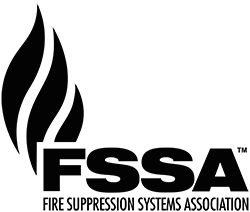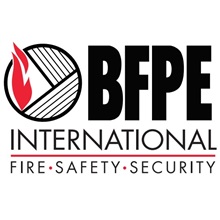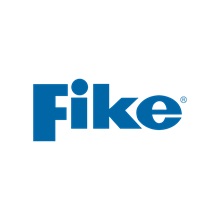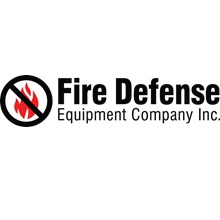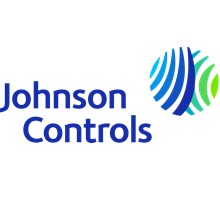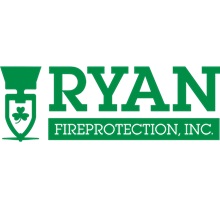NFPA 855 How to Work with Your AHJ on an HMA
This is the fun part because we all can read the code and I can get 10 people to read the same code section and we all get a different interpretation. So these are the kind of things that I need you guys to start thinking about. Because this is what we're looking at. The first question is, is this battery energy storage system inside a building or a cabinet? If it's inside of a building, we have the loss history to be very nervous about that. If you put them in non-occupiable cabinets outside, it's not as concerning for me because now I don't have to worry about putting my folks in harm's way to try to get inside in case there is someone that fell down, someone that got hurt, whatever it might be. I don't have to put my people in harm's way. We can go from a safe distance, spray water, wherever we want to spray water and let it burn. So that's the first question. I believe the industry, especially on the utility side, is doing a really good job about going towards outdoor non-occupiable cabinets but obviously we still have some. I know data centers and those types of facilities are still looking at the indoor conex box type. But obviously, from my point of view, if you're going to put it inside a building where I can go inside either a Conex box or an actual building, the code requirement is going to be much more stringent.
You guys should be looking at the results of the HMA. You guys should be having conversations with your engineering firm, whoever you hired to do the HMA and have discussion and be prepared to present it to me. Because the questions that you guys come up with are the same questions that I have. How are we going to deal with these consequences of failure? What is your system going to do? A big one these days is where are you going to put these things? I have two in the City of Phoenix that are in very populated areas. My requirements are going to be a lot different than a fire chief or fire marshal that I'm working with on the west side of Phoenix, in Power Alley, where there aren’t any houses within 15 miles of the batteries. Well, that's totally different.
I'm worried because if the vapors get out or if we have a fire; I'm going to have a smoke cloud and it's going to go somewhere. And where is it going to impact? So, where's the location? Obviously, we can't help it. If you need to put in populated areas, we do. You just realize it's going to be a lot more stringent than what happened in the middle of nowhere. And I stress that every single installation is different. So just because you put the same technology, the same exact design in one location, it may not work in another location based on the fact that now you're more populated. So, keep that in mind when you guys are installing these or looking to install these.
Do your research. What is the local history of fires? When McMicken happened, I can almost guarantee you that if you came to the fire marshal, from Surprise, within a few months of McMicken and said, hey, I want to put a battery storage system in, he'd probably say, hell no. We just hurt four firefighters. Of course, it's going to be no. What is the history? What have they done? Are they like Phoenix where we changed our entire codes, and we seem like we know a little bit more about it. Do you think the capabilities of Phoenix are going to be a lot different than the capabilities of a volunteer? No offense to the volunteer fire departments. Of course. Should that impact your design? It definitely could. But understand the capabilities of local fire departments. In Phoenix, we don't have borders. We have automatic aid. So, we can bring in a ton of resources if we have a battery energy storage system fire. If I'm a volunteer fire department in the middle of nowhere in the desert in Arizona, do I have the same capabilities? And you guys have to look at that.
And what is the code knowledge? I talk to a lot of people around the country about batteries and what the code is, just to get everyone on the same page. Because once again, a lot of times if someone doesn't know something or feel comfortable with something, it's going to be a no, just because they don't understand the codes, they don't understand the technology. It's going to be a no. We have to get past that. I am trying to do my best to train people throughout the country to get everybody on the page.
But you may run into a jurisdiction that doesn't have the code knowledge that some other jurisdiction might. That's your opportunity to help them out, educate them, help them, and call us as soon as possible.
I beat this horse to death for months now. If you think that you might be going into a spot, call that AHJ, call that fire department, call that building department and say, hey, we're thinking of doing this. I just had a conversation with a company that they're two years out and the original vision is they're just going to build cabinets. That's it. And then three years from now they're going to start bringing in batteries. That's perfect. Let's start talking about this. Is your warehouse adequate? What do we need to do? Understand the processes. Does plan review go to the fire department? Does it go to the county? Does it go to the building official? What's the appeal process? Let's say you've got alternate needs and methods. How do you put that in? You know you have a large-scale fire testing. Is it through the appeal process? And create that open dialogue.
Code allows us to do third party technical assistance. Don't be afraid of that. If you come to me with a very technical battery system, I might require third party technical assistance to help me. It benefits you, helps me and it benefits you guys. Best way to interpret the code is to create partnerships. Start talking. The sooner we talk, the better. Meetings as soon as possible. Pre-construction meetings, timely meetings, regular scheduled meetings. Just throw a meeting. Hey, let's meet every month and then we can always change it. You have my phone number; you have my email. What are my work hours? Because if I don't respond to you, then you know, well yeah, it's four o'clock here, but yet it's, you know, seven o'clock on the east coast. Make sure you answer your phone calls and emails. That's always important. Start with your timeline and then work backwards. Keeping in mind that plan review can take months. Open communication is the key. We have got to communicate with each other, and we want the same thing. Everybody wants project completion. We're not the stumbling block. We shouldn't be the barrier, but you still have to go through us in order to get project completion. So, if we have open communication, we're hopefully going to get success and completion. Avoid errors. Understand what code edition I'm on. If you come to me and say that you want to work on the 2021 International Fire Code, that's not me. If you tell me you want to do the base 2018 fire code, that's not me. We're the Phoenix Fire Code. We amend it. What edition am I on, what edition of NFPA 855 do I have? If I say no for a reason and then you give me a compelling argument to change my no to a yes. Yeah, hey, my mistake, let's move on.
 FSSA Series Presented by: Brain Scholl, Deputy Fire Marshall of the Phoenix Fire Department
FSSA Series Presented by: Brain Scholl, Deputy Fire Marshall of the Phoenix Fire Department
As a Deputy Fire Marshal that has seen the impact of ESS fires and incidents as well as a member of the NFPA 855 committee, Brian will share his perspective on how the code was developed, highlight lessons learned from serious ESS incidents, and how the code should be interpreted and applied. Brian Scholl is a Deputy Fire Marshal with the City of Phoenix Fire Department. Throughout his 22-year career, Deputy Fire Marshal Scholl has worked in many roles to include being the Public Information Officer and managing the Special Hazards Unit. This highly trained inspection unit inspects and permits any facility that stores, handles and uses hazardous materials including lithium ion batteries. Brian also serves on many different code technical committees to include NFPA 855, the standard for the Installation of Stationary Energy Systems and NFPA 420, the Standard on Fire Protection of Cannabis Growing and Processing Facilities.
Hear more from Brian first-hand at the upcoming FSSA 2024 Annual Forum which will be held February 22-26 in Phoenix, AZ.
Looking for more education on this topic? Videos are continuing to be added to the FSSA NFPA 855 Standard for the Installation of Stationary Energy Storage Systems Series playlist on YouTube. Subscribe to the FSSA channel for updates. Not an FSSA member? Join today and your entire company gains access to the FSSA Annual Forum, publications and communications, complimentary webinars, discounted training programs and more!
Take advantage of the FSSA new member promotion for Installers, Manufacturers, and Suppliers. This one-time introductory membership price is valid for any new member company or returning member company that has not been active in the last three (3) consecutive years.
